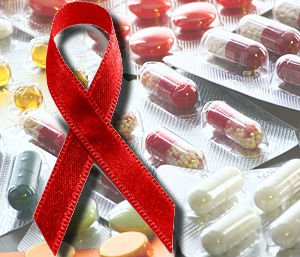How much costs HIV infection treatment?
 Very many people are interested in the question of how much costs HIV infection treatment and there is no answer to this question because firstly it is not possible to cure completely and the therapy can be different and include different drugs of different price categories. So what does the treatment involve?
Very many people are interested in the question of how much costs HIV infection treatment and there is no answer to this question because firstly it is not possible to cure completely and the therapy can be different and include different drugs of different price categories. So what does the treatment involve?
If we are talking about the usual for us understanding that I took a pill and the infection is removed from the body, then there is no such treatment. But there is a very good therapy that allows blocking the reproduction of the virus and actually lowers its level in the body to such an extent that its presence is not determined by the tests. If a patient with HIV infection undergoes therapy, the presence of a virus in his blood will not be determined. Antiretroviral therapy suppresses the reproduction of the virus, but does not remove it completely from the body. Such therapy is lifelong: for how long people live during that time they take medication, every day and preferably at the same time. But it happens that people forget, miss, do not treat themselves responsibly and the tablets stop functioning and be effective. In such cases, according to the expert, the virus begins to multiply, the person becomes worse and it is necessary to change the drug. Replacement, of course, makes treatment more expensive.
The struggle of a person with HIV infection is no different from any other. It is the eternal opposition to "good" and "evil." And if the forces in the struggle are unequal, then thanks to the support of third parties in the form of financing or innovative technologies, the outcome of the battle can be resolved in favor of "good". The events that unfolded around the eradication of HIV infection resemble something similar: every day, patients face with the virus in the struggle for their lives, and healthy people to a greater or lesser extent help win this fight in favor of the person. And it is on their help that the outcome of the match depends.
According to UNAIDS, to date, more than 30 million people have died from AIDS, and about 33 million are infected with HIV, but only half of them are aware of this. About 16 million children were left without parents as a result of AIDS; more than 7,000 newly infected people appear daily, mostly in low- and middle-income countries. Africa, in particular sub-Saharan area, continues to be the most affected region, and urgent and extraordinary measures are needed to counter the devastating effects of the epidemic.
Doctors recommend starting treatment of HIV infection with combinations of first-line drugs: zidovudine (Retrovir), lamivudine (Epivir), efavirenz (Sustiva), nevirapine, tenofovir, emtricitabine.
As for countries where the original medicines are protected by a patent, the cost of therapy depends on the companies' desire to provide discount programs for the purchase of drugs. Even taking into account the discounts, the price for them in countries with incomes below the average is about 6 times more expensive for the combination of tenofovir/emtricitabine/efavirenz is approximately 1033 dollars. It should be noted that the list of states in which discount programs for purchasing drugs are in effect is constantly decreasing, as producers are not sufficiently interested in selling their products at lower prices. As a consequence, scientists are trying to create new medicines, the production and use of which will be quite cheap.
Doctors recommend patients every six months to take a test for viral load the determination of the number of particles of the virus in the blood plasma. This helps to confirm the effectiveness of the antiretroviral therapy received or to reveal the inconsistency of this regimen (with a constant viral load of more than 5,000 copies ml) at an early stage, and also to determine the time of transition to more expensive treatment with second-line drugs. However, the high cost of treating HIV infection and the difficulty of carrying out such a test does not allow it to be widely used, and many patients continue to receive inadequate treatment.
The main barrier to the appointment of effective second-line drugs is their cost. The lowest price includes among others zidovudine and atazanavir.
Production and sale of generics of antiretroviral drugs are not allowed in all countries, but where it is possible, a real struggle has developed among the generic producers. In India, the cost of treatment has decreased by 99% over the past 10 years. It is not for nothing that this country is called the "pharmacy of the developing world": over 80% of drugs used in developing countries from 2003 to 2008 are produced in India. In addition, the lack of patent protection of certain medicines in India allows the creation of combined preparations from HIV infection with a fixed dosage, which contain several active substances and are prescribed once a day, which makes them convenient to use.
Approximately every four years, there is information in the media about a medicine that completely cures disease. Probably, this is done specifically to inspire sick people. Previously, the treatment consisted of a handful of pills that needed to be taken 3 times a day. Today it is 1-2 tablets a day. And this is a huge development. Now we need to work more in this direction, but at the same time remember that we must not expose participants to the study of danger. Optimists say that the result will be in a decade, realists give a period of 20-30 years.